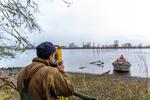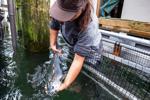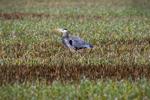Fish traps could once again be a common sight on the Columbia River after the Washington Department of Fish and Wildlife recently approved an emerging commercial fishery. They were banned from the river in 1924.
“I do think this will open the fishery up to a whole new generation who hasn’t been participating in the existing fishery because it’s severely constrained by bycatch impacts,” said Wild Fish Conservancy biologist Adrian Tuohy, who has been researching the traps.
Retired local commercial fisherman and fishery consultant Robert Sudar said the traps likely are too inefficient to work as a business model, both due to the cost of building a trap and how many fish could be caught in them.
'Super Blood Moon' Will Occur , With Next Week's Lunar Eclipse. A 'super blood moon' is another name for a super lunar eclipse. A lunar eclipse takes place as the earth passes between the moon and the sun, causing the dim light that reaches the moon to appear red. When this happens, the only light that reaches the moon’s surface is from the edges of the earth’s atmosphere, NASA, via 'The San Francisco Chronicle'. This year in North America, the "super blood moon" occurs early Wednesday morning. [On Wednesday morning], a full Moon near its closest point to Earth in its orbit will cross into Earth's shadow. That makes a super lunar eclipse, or if you will, a super blood Moon!, NASA, Twitter. Those on the West Coast will get the best view of the lunar phenomenon. The eclipse will peak at 3:20 A.M. P.S.T
“They might be really effective at a stream where you’re focusing on a particular run, or at the mouth of the Cowlitz perhaps,” he said. “It could work really well there, but not necessarily as a commercial venture.”
The project
The research project started in 2016, after the Wild Fish Conservancy decided to act to accelerate the testing on alternative gear to gillnets. The work is peer-reviewed and published in scientific journals and can be found on their website.
Tuohy said in 2009, the state created policies to encourage development of alternative gear, but even after more policies were approved in later years, there was not much movement toward achieving those goals.
“We’re a science-based nonprofit dedicated to wild fish recovery, so we support the development of alternative gear,” he said. “Just seeing that the state hadn’t achieved its objectives we decided to pursue — with a commercial fisher in Cathlamet — the fish trap idea because it was originally an indigenous means of passively catching fish and it supports low-impact sorting of your catch.”
In 2016, the researchers set out to build a trap like the ones that were once popular along the river 80 years ago. They conducted a feasibility study to ask “can we catch fish and release them lively and in good condition?”
The traps, also known as pound nets, passively funnel returning adult fish into a maze of walls and compartments until they reach the final compartment, where they can swim around freely. Fish are brought up from the final containment area with a net and pulley system.
The historic traps design used 40 untreated 14-inch diameter wood pilings driven 3 to 5 meters apart in the river with netting strung between them.
Tuohy said the first test showed promise, but the old style of trap needed to be modified so the fish stay in the water the whole time, reducing the stress on them and further reducing fish mortality.
Support local news coverage and the people who report it by subscribing to The Daily News.
In 2017, the researchers marked the fish they caught to see if they survived all the way to the spawning grounds upriver.
“This passive trapping process proved very effective,” he said. “We saw no detectable impact to Coho salmon and sockeye salmon.”
Following those two tests, the state authorized a commercial trap test fishery in the fall of 2018 to test the economic viability of the gear within the lower Columbia River fishery, allowing WDFW to sell the hatchery salmon the trap caught.
In 2019, the feasibility of the gear under seasonal river conditions and a modified passive trap design that used a net pen system was tested, and this year, the group is moving to a new location in the Clifton Channel, Oregon and building a trap that should work on both tides, instead of just one, Tuohy said.
“If that works out I do think that really should open the door to sustainable fishing opportunities in the summer and fall fisheries,” Tuohy said. “The whole goal here is to benefit wild salmon recovery by reducing bycatch impacts and the detrimental effects of hatcheries.”

A Wild Fish Conservancy employee looks at the piles of a fish trap in the Columbia River in February.
Since 2016, the research has cost about $1.1 million, including the cost of building the traps and staff time, according to the Wild Fish Conservancy website. Funding came from WDFW, the Oregon Department of Fish and Wildlife, the Wild Salmon Center and the National Oceanic and Atmospheric Administration.
Commercial viability
While the nets in the Columbia near Nassau Point in Cathlamet and now in the Clifton Channel in Oregon have caused some confusion and worry among community members, Tuohy said he wants to make sure people know fish traps are about “adding to sustainable fishing opportunities” and not forcing anyone to change.
Sudar said the traps may not be economically sustainable for the fishermen.

A Wild Fish Conservancy fish trap is silhouetted on the Columbia River in 2018.
The 2016-2017 experimental trap cost about $100,000 to construct, including pile driving, net construction and installation of the winch, according to the Wild Fish Conservancy’s research papers.
Sudar said that’s a steep price, especially when gear like boats and nets can be used for different fisheries in different parts of the river, while the traps are static and only work for specific seasons and river conditions.
Tuohy acknowledged the high starting investment for a trap is an obstacle, especially to fishermen who already own gillnetting gear. He said he hoped the government would consider a subsidy program to get it started, and said Wild Fish Conservancy would be willing to help get people over the hurdles.
“We see the potential benefit for wild fish recovery, and we want to do everything we can to help fishermen who reach out and want to do something like this,” Tuohy said. “We want to help when it comes to permitting, raising funds. We’re here to help and move forward beyond the research.”
According to the Wild Fish Conservancy’s research, the test fishery netted just under $25,000 in sales of hatchery-origin fish in 2018. For the conventional gillnet fishery, total revenue generated from the harvest and sale of hatchery and wild-origin salmon was about $304,502, with an average of 72 vessels fishing, the paper said.
“That doesn’t replace the gillnet fishery, because it doesn’t necessarily put more fish in the marketplace, which is what commercial fisheries are here for,” Sudar said. “It could help with hatchery escapement if they put it in specific locations, but then it’s more of a management tool than commercial gear.”
Commercial test
The Washington Department of Fish and Wildlife approved an emerging commercial fishery in late April, which will allow Columbia River commercial license holders to apply for a permit to use beach seines, purse seines and fish traps on the river either this year or next year.
WDFW Director Kelly Susewind said the emerging commercial fishery designation is just the first step of “a much longer process toward potential wider adoption of these alternative gears.” Without the designation, the traps can only be used as scientific collection devices or in a test fishery, which limits managers’ ability to evaluate whether they are commercially viable.
Sudar said while beach seines and purse seines are included, the main push behind the emerging commercial fishery are the traps.
“This designation does not restrict any existing commercial gears, nor does it mean these alternative gears will suddenly dominate the non-treaty commercial fishing landscape on the Columbia River,” Susewind said in a press release.
WDFW will collect more data and fishery managers will prepare a report to the Washington Legislature and, if warranted, request changes to existing statutes that prohibit the use of these gear types in the river.
Sudar and WDFW both said one question is just how many fishermen would be interested in fishing with traps.
“Our position is can you prove that the trap is a viable gear? You can’t do that until it’s an emerging fishery and they can sell this catch. Well, OK, we’ll try,” Sudar said.
Future work
Tuohy said there’s a big culinary market for fish that can be certified sustainable, and the fish traps produce high quality product because there’s “little to no scale loss or bruising.”
He said while “nobody is forcing fishermen to change” to traps, he thinks the method could add value to the market and is “just another tool in the toolbox.”
“It might be the tool for you,” Tuohy said. “It might be that no matter what you just want to gillnet, and that’s fine.”
The method will spread beyond the Columbia, Tuohy believes, to national and international waters as fisheries continue to change and fishermen adapt.
“Once we wrap up this further research and have a working model in the Columbia running commercially, I think it will be jewel of a fishery that will inspire change elsewhere,” he said.

A Wild Fish Conservancy employee handles a coho salmon at a fish trap in the Columbia River in 2019.
May 23, 2021 at 11:00PM
https://ift.tt/2QMplC4
New fish traps to get commercial test in the Columbia River resemble vintage gear long banned from fishery - Longview Daily News
https://ift.tt/35JkYuc
Fish


No comments:
Post a Comment